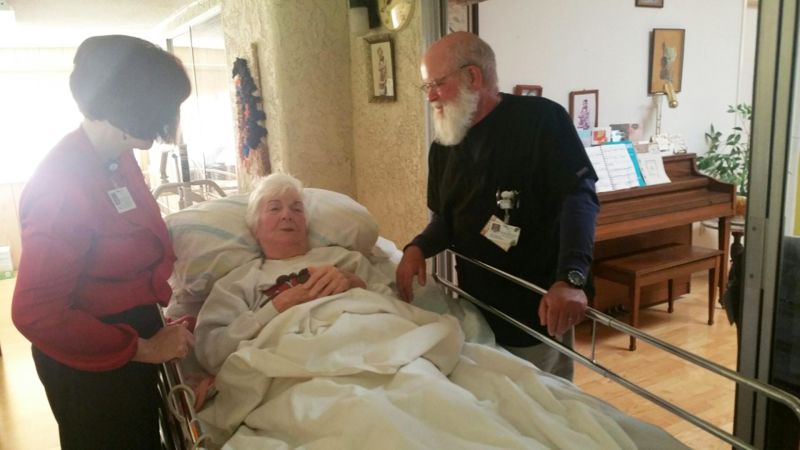“This is my house and I’m going to go right here,” she says to a visitor.
To help ensure that happens, Heller enrolled in hospice. These days, a team of health professionals comes to her home to provide her with pain relief and care for her psychological, social and spiritual needs. It’s comfort care in lieu of life-sustaining — and expensive — end-of-life medical treatments that can require patients to be hooked to feeding tubes and pumps in a hospital ICU.
“I don’t like being in the hospital,” Heller says. “They wake you up all the time; they don’t let you rest; you don’t feel good. It’s different with hospice.”
Changing the Paradigm
But there are times when hospice isn’t able to protect patients from unwanted care.
A person’s end-of-life desires are most often thwarted when well-meaning loved ones see the patient in some sort of distress, says Teri Helton, program manager for Livingston Memorial Visiting Nurses Association, a nonprofit hospice program in Ventura County. And instead of calling the hospice nurse, she says, they call 911.
“So the paramedics will take them to the hospital in a rush, and what ends up happening is they go through tests, they go through extra trauma in the hospital instead of being treated with the dignity and kindness they would in their home,” she says.
Mike Taigman has long wanted to change that paradigm. He’s general manager of American Medical Response, which provides most of the paramedic and ambulance service in Ventura County.
Several years ago, he learned of a Texas program in which paramedics work with hospice to better honor a person’s end-of-life wishes. Taigman says he shared the concept with several local hospice managers, who eagerly embraced it.
“They were just bouncing off the wall, super excited about having paramedics who were trained to understand hospice and be part of the hospice partnership,” he says.
That led to the creation of Ventura County’s 911 hospice program, the latest in a series of state-approved pilot projects in various communities that are experimenting with expanding the role of paramedics.
Read the full story via KPCC

